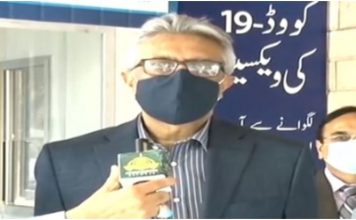CM Punjab’s hard work can be shared to arrest dengue spread anywhere
ISLAMABAD Aug. 22 (TNS): The Punjab government led by Chief Minister Mian Shahbaz Sharif made a herculean effort to fight dengue epidemic in 2011 and managed to control it.
Dengue epidemic in 2011 was controlled through a herculean effort by the Punjab government under the guidance of Chief Minister of Punjab Shehbaz Sharif.

Punjab Healthcare Commission (PHC) organized awareness seminars in different cities of Punjab and created awareness among doctors, medical staff and general public. The PHC conducted inspection of about 150 hospitals in Lahore, Kasur, Gujranwala, Sheikhupura, Attock and other districts where dengue was likely to spread, and provided necessary training to doctors and medical staff with a view to enabling them to respond proactively against dengue epidemic.
The Punjab government adopted an excellent approach and planning to combat the dengue epidemic of 2011, which was an asset and can be shared and replicated to combat the dengue crisis anywhere in the world.
The Punjab Health Department eliminated dengue breeding sites, which helped control the dengue epidemic. They eradicated dengue larvae from 55,000 breeding sites, registered 2,125 FIRs against violators and sealed 130 places.
The Punjab Health Department reinforced the Dengue Epidemic Control Regulations 2011. Under the regulations, owners of all private property, homes, factories, mills and tyre warehouses were made responsible for addressing causes for the growth of the dengue mosquito.
The Punjab Health Department stressed on the citizens to ensure that water does not accumulate at their homes and also that broken equipment for storage and disposal of water is repaired.

Under the rules and regulations, health inspectors undertook checking of different premises and the owners bore the cost of ‘elimination’ when breeding spots of dengue mosquitoes were found.
Dengue viral cases in Punjab have been controlled with lesser number of causalities, but the disease suddenly saw an upsurge in 2011 especially in Lahore and adjoining areas of Punjab. By Dec, 2011 a total of 21685 cases of Dengue were reported in the province, including 17610 in Lahore alone. A large number of these cases were cured while a total of 350 deaths in the province including 298 in Lahore were reported till Dec, 2011.
According to Dr Umar chairman Punjab Information Technology Board (PITB) Government of Punjab started multiple activities to combat the dengue disease in 2011. During that time Chief Minister of Punjab Shehbaz Sharif used to call all the workers, ministers, secretaries and officers every 6am in the morning and ask them what steps they have taken to prevent the Dengue disease.

Dr Umar said that once in the morning in a meeting a presentation was in a process where pictures were shown regarding the prevention of dengue, spraying activities, in some picture chemicals were adding in water to kill dengue causing mosquitos, some pictures were showing cleanliness activities, so on and so forth. And one picture was missing time stamp.
Then CM Punjab Shehbaz Sharif asked that where time stamp is, how we know that where and when the activity had happened and asked me to introduce a system which indicate time stamp ad location of the activity.
Then we worked on it immediately and introduced a smart phone application which can insert a time stamp of the picture and the GPS location of it to determine that from where the picture was taken. This project was started in 2011 and since then in 5 years 17 million such pictures with time stamp and location have been uploaded. On the basis of this system CM Punjab Shehbaz Sharif and Health Department Punjab got assistance for tracking the dengue affected places and have taken considerable actions to check the disease.
Countless scientific innovations were introduced in the system which common people might not know. Whenever a dengue patient has been admitted in the hospital then a team goes to the patient house and do a GPS tag and it gives the coordinates. The dengue causing mosquito Aedes aegypti if killed at larva stage or chemicals added in the water where it flourish then the water is discarded, and then it does not grow.

So we get three type of information from our system to prevent dengue and first one was smart monitoring of Anti Dengue field activities where all the pictures and location are traced of dengue affected area. More than 4000,000 activities were reported in 2013.
Second stream of information is the GPS address of the dengue patients and third is the location of the presence of the dengue mosquito’s larva where dengue can spread after months which is called early disease detection using Spatial Temporal Analysis.
All this information is analyzed by the sophisticated computer system called online dashboard for smart monitoring of Anti Dengue activities. And then the report is being generated that where this disease can spread and what step is needed to be taken for the prevention of disease. The government of Punjab has worked hard and effectively used the technology to control the epidemic disease like dengue.














